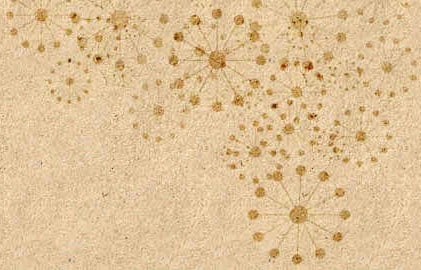(Annie writes)
Some Jews made their way to the Balkans and Asia Minor in 300 B.C.. Many were brought as slaves by the Phoenicians, others were encouraged to migrate round the Mediterranean or settle in Asia Minor as well as the Thracian and Aegean coasts. Jews have been known to exist in Thessalonica in 140 B.C., while important colonies have settled on the islands of Cos, Cyprus, Rhodes.
During the time of the First Bulgarian Kingdom and the Golden Age of Simeon (893/927) alongside the flourishing of literature, heightened commercial developments have taken place – it is assumed that those were encouraged by Jewish settlers.
St. Cyril successfully used the Hebrew letter bet (by turning it) to create the Б in the Cyrillic alphabet to express this sound – it does not exist in the Greek alphabet. The letter Ш is taken completely from Hebrew consonant shin, neither that, nor the consonants Ж or Ц exist in the Greek alphabet –the first is made out of two letters shin, turned away from each other, with joint backs, while the second is taken straight from the Hebrew letter tzadi. St Cyril knew Hebrew and used it successfully to borrow/create letters, which he could not borrow from the Greek alphabet.
A large number of Greek Jews, who immigrated to Bulgaria towards the end of the First Bulgarian Kingdom settled not only in large towns like Nikopol, Vidin, Silsitra and Sofia, but also in villages as well.
During the same time, Byzantine Emperors were decreeing forceful baptisms on the Jews, even though the Legal Code – the Basilica – recognized the rights of the Jews to regulate their religious and communal affairs.7 The religious fervour of the Crusaders led to further murders and desecrations of synagogues. There were further persecutions of the various Jewish sects in Northern Europe, which led to consistent immigration to the Balkans, which lasted all the way to the 15th century. And it was not only religious zeal that fuelled the persecutions of the Jews, but also the fact that Christian merchants and professionals objected to the so called “position of power” of the Jews as bankers, physicians, lawyers and artisans.
The Jews were motivated to learn and the more intelligent ones practiced and often dominated a variety of professions – medical doctors, cartographers, ambassadors, astronomers, etc, others were farmers, traders some were shopkeepers, coppersmiths, blacksmiths, tanners and peddlers. Some were very rich, some were very poor and others – destitute. Those, who rose to prominence by their skills and abilities, were trusted both by Christian and later on by Muslim rulers, who put them in positions of trust, important administrative and financial posts in their governments and the army.
The knowledge of many languages – Italian, Greek, Turkish, Hebrew, French, and Arabic made them indispensable to politics and trade. Their family links to other countries, international trade experience allowed them to play a prominent role in banking and commerce. It is assumed that in the Byzantine and especially in the Balkan environment, Jews were much more socially integrated than in Western Europe. In fact the Balkans were a good place for them to practice those skills, as various trade routes met here and traders coming and going from the North and South, East and West interacted here. However, they often paid community or collective taxes, as well as special taxes, import and export taxes and many others, imposed by the local governments.
With the establishment of the Second Bulgarian Kingdom, the rulers from the Assen family encouraged the immigration of Jewish traders, scholars and philosophers to Bulgaria in order to stimulate the prosperity and development of the new state. The new rulers of the country invited traders from Ragusa (Dubrovnik), Genoa and Venice to come and live in the new capital Turnovo in order to increase the economic independence of the new state. It is assumed that many of those were Jews, who then facilitated the arrival of others. A lot of the traders from Genoa settled in Turnovo, while the Venetians settled in Vidin. A charter, given by Ivan Assen II to the Genoese merchants attests to this, as do storage facilities, built by the Venetians near the River Danube, demolished comparatively recently4. At the same time Kastoria and Ohrid in Western Bulgaria (now part of FYR of Macedonia) became centres of Jewish learning with leading representatives:
• Rabi Tobias ben Eliezer, who was a leader of the community or Romaniote (Byzantine/Balkan) Jews and wrote Midrash Legah Tob – an important commentary of the Pentatuch;
• His pupil, the philosopher and metaphysician Leo Mung, who was converted to Christianity and became Archishop of Ohrid. After that he studied for many years under Euphtemius of Turnovo and travelled extensively in a variety religious centres in north Africa and Europe. He wrote extensively and was interested in the importance of grammar and unification of the language – much in the style of Euphtemius of Turnovo1;
Jews on the Balkans did not live in isolation, but socialized and co-existed with Christians and later on with Muslims. It was acceptable for Christian families to be linked by marriage to converted Jews and their children and grandchildren were born as Christians. There was little restriction as to where they lived in towns and cities. Sometimes they preferred to live in the part of town, where the other foreign residents lived – like in Frank Hisar in Turnovo. In other places they had their own colonies, or they were spread around the city – as in Thessalonica, etc. They were often working with Christians and were members of the same guilds1.
